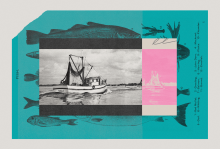Feature
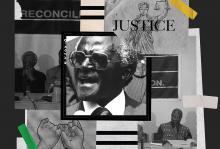
ON A SUNDAY morning in Atlanta in April 1899, white churchgoers, dressed in their finest, filled the pews to hear the word of God. As the postlude concluded, the congregants poured out of their houses of worship, bought sandwiches for lunch, and crammed onto trains heading toward Newnan, Ga., to watch the gruesome extrajudicial murder of Sam Hose.
Hose, a 21-year-old Black farmhand, had been pulled off a train by a white mob and was later murdered while thousands watched his lynching. “‘Sweet Jesus!’ Hose was heard to exclaim, and these were believed to be his last words,” writes Philip Dray in At the Hands of Persons Unknown.
The relationship between religion and injustice in the United States is complicated. U.S. Christians tend to emphasize the role of Christianity in contesting injustice, while forgetting images such as churchgoers going seamlessly from worship to an extrajudicial execution.
In the wake of George Floyd’s murder, the U.S. witnessed the largest protests in our history. This new moment in the long movement for human freedom arises in response to high-profile police and white vigilante killings of Black men and women; it demands an end to police violence and redress for centuries of racial injustice. This “reckoning” has pushed local, state, and national efforts to reform police practices, hold individual police officers accountable for abusive violence, repair the injustice caused by policies such as redlining, and establish the truth about lynching.
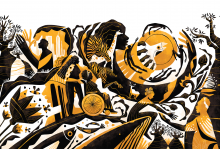
In a real sense all life is interrelated. All [people] are caught in an inescapable network of mutuality, tied in a single garment of destiny. Whatever affects one directly, affects all indirectly. I can never be what I ought to be until you are what you ought to be, and you can never be what you ought to be until I am what I ought to be. ... This is the interrelated structure of reality. —Martin Luther King Jr.
WHEN I STUDIED abroad in South Africa in 1996, I learned much about the power of interdependence and mutuality. There I encountered and experienced the southern-African philosophy of ubuntu. Through Nelson Mandela’s moral leadership and embodiment of ubuntu, the nation was led through transformational change. Like Dr. King, Mandela refused to hate his enemies, including those who kept him imprisoned for 27 years, as he envisioned a future South Africa that included Black and white together.
Archbishop Desmond Tutu summarized ubuntu in what became a marker of both a movement and a philosophy: “I am because we are.” Mpyana Fulgence Nyengele, author of Cultivating Ubuntu, offers this definition: “Ubuntu is the substance and core being of a person and speaks particularly about the fact that we cannot be fully formed as human beings in isolation.” Rather, as Stephen Lewis, Matthew Wesley Williams, and Dori Baker share in Another Way, Nyengele explains that “it is only through our communal participation and interaction with other people that we begin to develop trust, compassion, caring, humility, kindness, and forgiveness, which are all qualities of what it means to be human and humane toward others. Similar to the fruit of the spirit, ubuntu is possible because ntu or Spirit ‘orients persons toward life-giving choices, actions and behaviors.’ ... Therefore, ‘ubuntu promotes and enhances the abundance of human life in community and beyond.’”
I think of ubuntu as an expanded, vivid version of the Golden Rule: We are called to do unto others as we would have them do unto us. Or, as King so often put it, we are to be “our brothers’ and sisters’ keeper.”
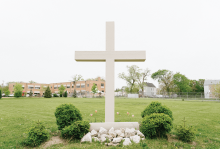
ONCE A MONTH, 30 mothers and grandmothers gather at the Precious Blood Ministry of Reconciliation in Chicago. The women share a meal before coming together in a circle. Facing each other in their chairs, they begin to share stories of painful loss.
Sister Donna Liette, who coordinates the organization’s Family Forward Program, created this space 10 years ago for women who have lost children and grandchildren to gun violence or incarceration. Gun violence has been a devastating reality in the city for decades. In 2020 alone, the Cook County Medical Examiner reported 875 gun-related homicides. And while incarceration rates have declined in recent years, Illinois had approximately 38,000 incarcerated individuals in 2020, according to the Henry Frank Guggenheim Foundation.
Liette says she keeps in touch with around 80 women through the program, many of whom attend the monthly gathering. Judy Fields is one of them. Three of her grandchildren have been killed by gun violence in the Back of the Yards neighborhood.
“I first met Sister Donna four years ago, and we became instant friends,” Fields said. “I don’t have anybody to talk to, and she fills that void. She looks after me—she knows how to listen.”
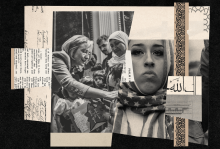
EXCEPT FOR ABRAHAM LINCOLN and Thomas Jefferson, every president of the United States was or is a professing Christian.
Only in the case of John F. Kennedy, it seems, has a president’s Christian faith counted against him in the opinion of a significant number of citizens, and in Kennedy’s case it was because he was Catholic rather than Protestant. The Christian belief of public officials in any branch of national, state, or local government hardly ever raises concern among the U.S. public. But the opposite is true when it comes to Muslim officials.
Many conservative Americans say they fear that the U.S. will become a nation influenced by Islamic tenets instead of Christian ones. Commentators on Fox News often express alarm about sharia (Islamic law). Jeanine Pirro, host of the network’s Justice with Jeanine Pirro, accused Rep. Ilhan Omar, D-Minn., a Muslim woman of Somali descent, of supporting Islamic rule in the United States. Omar and Rep. Rashida Tlaib of Michigan are the only two Muslim women ever elected to Congress, and two of the three Muslims ever to serve in the U.S. legislature; Twitter users criticized Omar for wearing a hijab and Tlaib for wearing, at her congressional swearing-in, a traditional Palestinian dress called a thobe, made by her mother. Another Fox News host, Pete Hegseth, said that, based on how Tlaib “talked about President Trump having a hate agenda, I could, therefore, look at her and say that she has a Hamas agenda.” The Associated Press had to debunk the claim that Tlaib’s thobe was a “symbol of Hamas terrorists,” a sign that many Americans may have believed it to be true.
The alienation and hate go even further. A Florida Republican politician said in a fundraising email that falsely claimed that Omar worked for the nation of Qatar, “We should hang these traitors where they stand.” Another man called Omar’s office and said he would “put a bullet in her skull.” Following the Jan. 6 insurrection at the U.S. Capitol, when lawmakers were still in the building trying to certify President Joe Biden’s election, Tlaib discussed on the House floor her constant fear due to the death threats she regularly receives.
“I worry,” she said, “every day.”
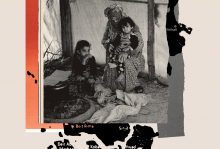
JONATHAN KUTTAB’S Is the Two-State Solution Obsolete? is an important, clear-eyed contribution to the conversation about the future of Israel-Palestine. Kuttab directly and with a forgiving spirit addresses what is at stake, making clear why thinking beyond the two-state solution paradigm is necessary for anyone who seeks a just and equitable path forward in the region.
As he writes, the “facts on the ground” are such that the geography of the two-state solution is untenable. He primarily discusses the emotional and social toll of uprooting the settlement enterprise, which is made up of more than 700,000 Jewish settlers living scattered across the West Bank. Israel has been building the infrastructure of a one-state reality for decades now, infrastructure that advances de facto annexation, suburbanizing settlements in the Jewish imagination, and fragmenting huge swaths of Palestinian territory. Jewish Jerusalem and its settlements, roadways, and municipal systems sprawl into the boundaries of Ramallah, Bethlehem, the Jordan Valley, and Palestinian East Jerusalem.
Currently, Israel is working on highway, housing, and water projects that are literally destroying and tunneling through mountains—and communities—in the landscape around Jerusalem and throughout the West Bank. This is not to mention the unending settler encroachment—in the past month alone, there have been four new settler outpost projects just in the South Hebron Hills. These steps are not easily undone, and with each construction project, Israel’s pseudo “two-state commitment” becomes more and more deeply embedded in an oppressive and unequal one-state reality.

WHEN URBAN CHURCHES disband, congregations face decisions about what to do with their property. In cities with hot real estate markets, church buildings are often sold off and redeveloped as condominiums or for other profitable uses. But the logic of the market need not guide all such decisions.
In 2016, the Community of Christ, a small church in central Washington, D.C., gave away the building it had owned for more than 40 years, a property worth more than $1 million. During the process of disbanding, the church members had decided that they wanted to pass their building on to an organization doing socially meaningful work in the neighborhood. Their story demonstrates ways of thinking about property as a spiritual and collective resource—and how to put those ideals into action.
The Community of Christ was formed in 1965 in Washington’s Dupont Circle neighborhood. Although founded by Lutherans, it was from the beginning an ecumenical church. And like several other congregations forming in D.C. around the same time, the community was an experiment in church: dedicated to social justice and to doing God’s work in the neighborhood, including building relationships with their neighbors. In 1973, the group purchased an 11-room storefront building in the nearby Mt. Pleasant neighborhood, a diverse and relatively affordable area where a number of church members had already moved, and began worshipping in that space. Shortly thereafter, the Community of Christ became a lay-led, shared-leadership congregation, with no single minister and no paid staff. All activities of the church—both spiritual and logistical—were from then on carried out on a volunteer basis by members, and all major decisions were made by consensus.
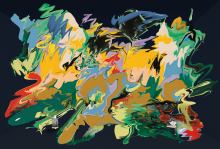
OFTEN, WITH MEDITATION, I’m reminded of many people’s reaction to poetry. “I don’t get it,” they say, a little embarrassed to be admitting this to a writer and a former English teacher.
The first thing I think is: You must have had a really lousy teacher who taught you that poetry is something you “get”—a message you extract for a good grade. Poetry-phobes might feel a bit more relaxed when I tell them that’s not how poetry works. Often, with my favorite poems, I never fully get them. All I know is that reading and rereading them, the mystery stirs inside me again. In her lovely poem “Self-Portrait with Religion and Poetry,” Kate Daniels describes what happens to her when she deeply connects with a work of art:
... I lie down in the silence
of my mind and touch the world all over.
Clouds fly through me. Trees break the sky
above a frozen lake, and a footprint
startles its crust of snow.
Then I can type another page, or nurse
my hungry infant. I can take from the cupboard
the bread and the wine, the eggplant and garlic
my hands will transform into sustenance.
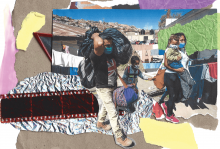
Corruption and climate disaster push many people in Honduras and elsewhere to make the uncertain journey north.
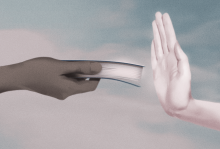
IN THE WAKE of the horrific killings last year of Ahmaud Arbery, George Floyd, Breonna Taylor, and others at the hands of white vigilantism and aggressive policing, many institutions, companies, and other bodies sought to express their opposition to racism, even if their responses were merely symbolic gestures. But the presidents of Southern Baptist seminaries went in what seemed to be the opposite direction, issuing a joint statement in November that disavowed what is known in academic circles as “critical race theory.”
Many Black clergy were shocked but not surprised by the seminary presidents’ statement, coming from a denomination that had sought to defend its racist history and had criticized efforts at racial reconciliation and truth. Two prominent Southern Baptist-affiliated megachurch pastors—Ralph West and Charlie Dates—announced their out-migration from the denomination, and it’s possible that more Black clergy will follow.
Five weeks after the Council of Seminary Presidents released their statement—curiously, on the fretful day, Jan. 6, when a frenzied mob of homegrown white terrorists blitzed the U.S. Capitol—the six presidents, the heads of each Southern Baptist seminary, met with a group of Black Southern Baptist pastors. The pastors reported that the exchange was conciliatory, and that they felt heard—even as the seminary presidents doubled down on their rejection of critical race theory. The presidents offered gestures toward further conversations and a stronger commitment to recruit and financially back more Black students at their schools, but no counterproposal concerning critical race theory.
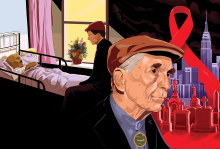
The well-known peace activist spent much of his life bringing comfort to the dying.
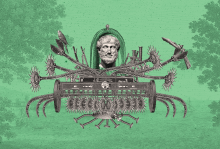
CHANGE IS DIFFICULT, great change even more so. Yet some things change naturally over time with seemingly little effort—the course of a river, the shore of an ocean, the direction a tree decides to grow. When humans interfere with the course of nature in an unnatural and thoughtless manner—such as by damming a river or clear-cutting a forest—we are bound to experience unknown and often unwanted consequences. But perhaps reverting to more natural systems of change will not be as difficult as we imagine.
Western civilization is just beginning to realize that nature is wiser and more powerful than we are and will, without a doubt, outlive us. She knows her mind, and she understands what keeps life in balance. Because today we seldom see nature in her unmolested glory, we rarely consider the degree to which Western civilization has changed that which is natural to what is now unnatural. Since time immemorial, Indigenous people have learned to observe natural change and tried to flow with it, or bend it to their benefit.
Now, like never before, we need people with keen observational skills to help us recover and retain the truths in nature. Indigenous wisdom’s long relationship with creation is based on an ethic of harmony, humility, and respect. Such efforts need not always contradict Western notions of science. Modern scientific methods often confirm the truths that our Indigenous teachers have always known. Science verifies what scientists observe. In more than one sense, our Indigenous elders have always been scientifically aware. Western scientists use tools that tell them the hydrological cycles have changed. Our elders know the huckleberries are ripening a month later than they always have. I have heard from elders in the past few years that our medicine plants are not nearly as potent as they used to be. They say the earth is weakening; an unnatural change has occurred. Western science has come to the same realization by explaining that as more carbon is released into the atmosphere, plants are less able to develop the nutrients needed. Both observe verifiable knowledge. But one is abstract while the other is personal. What modern science tells Western society about creation, our Indigenous “scientists” have been observing for millennia. What we can agree upon together is that the earth is changing, unnaturally, and it is not a good change.
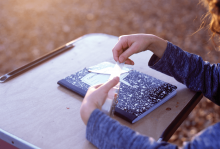
IN 1974, TWO teenagers went on a vandalism spree in the quiet community of Elmira, Ontario. They slashed car tires, broke store windows, and destroyed a garden gazebo, racking up about $3,000 worth of damage. The pair faced jail time for malicious vandalism. Instead, their parole officer, Mark Yanzi, who was also part of Mennonite Central Committee in Canada, asked the presiding judge if the youths could meet their victims face to face. This, they said, would allow the offenders to apologize directly and pay for damages. The judge agreed—setting legal precedent in Canada.
Though Indigenous and First Nations communities have a long history of similar conflict resolution practices, the Elmira case is seen as a moment when formalized restorative justice models, known at the time as victim-offender reconciliation programs (VORP), entered the Canadian criminal legal system. And Mennonite Christians were integral from the beginning.
In a 1989 handbook, VORP Organizing: A foundation in the church, Ron Claassen, Howard Zehr, and Duane Ruth-Heffelbower further developed the concept of VORP as a program that could work in cooperation with the judicial system but embodied “different assumptions about crime and punishment.”
“True justice requires that things be made right between the one offended and the one who has done the offending. It embodies a concept of restoration—of victim as well as offender. This also implies personal accountability on the part of the offender, who is encouraged to acknowledge his or her responsibility for the harm, participate in deciding what needs to be done, and to take steps to make amends,” they wrote.
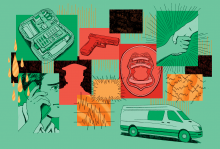
WHEN A WOMAN experienced an opioid overdose during a morning breakfast service at St. Mary’s Episcopal Church in downtown Eugene, Ore., church staff quickly administered naloxone, a medication designed to rapidly reverse an overdose.
Then the police arrived, lights blazing, according to Bingham Powell, rector at St. Mary’s.
Police interference during a drug overdose or mental-health crisis can often turn deadly, putting some of society’s most vulnerable further at risk for harm. Thankfully, when the officers arrived on the scene at St. Mary’s that day, no one was killed. But a police response can also impair the situation in other ways. The woman who had overdosed became frightened by their presence and left.
“This isn’t a story of police misconduct,” Powell said. “It’s just a story of the police showing up, and it caused the person to run away and not get the help they needed.”
What if someone else had arrived on the scene first? In Eugene, it’s entirely possible that they could have. For nearly three decades, the city has been home to CAHOOTS (Crisis Assistance Helping Out On The Streets), an emergency-response program that sends experienced unarmed crisis counselors and EMTs in response to mental health, substance abuse, and homelessness-related crises. The program has become a model for other cities looking to shift community resources away from armed policing in favor of social services.
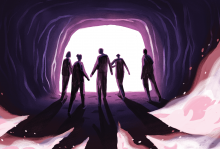
“To be loved, baby, hard, at once, and forever, to strengthen you against the loveless world. Remember that: I know how black it looks today, for you. It looked bad that day, too, yes, we were trembling. We have not stopped trembling yet, but if we had not loved each other none of us would have survived. And now you must survive because we love you, and for the sake of your children and your children’s children.”
— James Baldwin,
The Fire Next Time
I ENTERED THE doctor’s office, met by the smiling face of the receptionist. “May I help you?” she asked, as I tried to maneuver my lips to smile to cover how terrible I was feeling. “I need to get tested.” She didn’t ask me what test I needed, or where I had come from, or what I was feeling. She checked me in and pointed me to the waiting area—a cold and lonely and familiar place.
I wondered if they knew how terrified I was for me, for my wife, for my son, for our baby not here yet. I wondered if they knew that my body was on fire, that my mind kept alternating between anger and regret for letting my friend in the house with no mask. I wondered if they knew how my stomach emptied the chopped carrots, old celery, and the warm chicken noodle soup into their clean toilet.
“Danté Stewart,” the nurse called out to me, “right this way.” I could hear my heartbeats through my ears as I took the steps through the cold and lonely and familiar clinic. She called in the other nurse. They took my pulse. They put the little white and blue device with the red numbers on my left middle finger. 97. Good. 106 bpm. My heart is racing. As I felt the blood pressure cuff tighten its grip on my arm, the nurses gave that look.
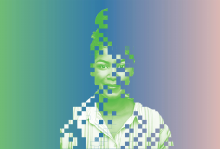
IF ASKED “What era would you time travel to if you could?” many young Black and brown and Indigenous people would answer in a flash, “None of them.” Why? We’re too aware of the past and what it means for us today—we tweet about the results of American slavery and can break news of the latest injustice to emerge from centuries-long hatred of nonwhite skin faster than MSNBC. We feel the negative effects of history enough each day to not want to go back there.
But maybe we should. If all we see of ourselves on TV and social media is us sick, oppressed, or dead, what other understanding of ourselves do we miss? How can we remember that we are greater than the damage done—that our history holds more than that and so might our present?
Ruby Sales, founder and director of the SpiritHouse Project, helps young people invested in faith and social justice see themselves through the lens of their divine wealth and boundless potential rather than through eyes dimmed by media and versions of history shaped by white supremacy. Sales, who by age 17 was a Student Nonviolent Coordination Committee member registering people to vote in her home state of Alabama, has a Master of Divinity degree from the Episcopal Divinity School and is a preacher, speaker, and intergenerational mentor on racial, economic, and social justice. I spoke with her in December by phone. —Da’Shawn Mosley
Da’Shawn Mosley: I watched a YouTube video of you speaking in 2015 at St. Albans Episcopal Church in D.C. and was struck by what you said about today’s youth: that the most recent generations have incredible insight but haven’t lived enough to have hindsight.
Ruby Sales: Now that I’m working with young folks in my fellowship program and have had some time to weigh how things have changed from the ’90s to the 2000s, I think young people lack insight also. When you have been raised in a technological age, when history is no longer lived experience but is created on social media and reproduced through technology, I think that long-term memory is affected, as well as the ability to empathize and connect with human suffering. There is a difference between being able to theorize about human suffering and being able to feel it. All of these are challenges faced by generations raised in a technocracy—the decimation of history, of who we are as a people.
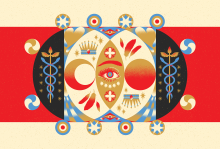
I WAS CALLED “John the Baptist” because of that great revival movement we had down by the Jordan River. We were all so hopeful then, especially after my cousin Jesus showed up. I suspected he was The One to save our people, even after he asked me to baptize him. But when I heard that heavenly voice announcing, “This is my Son,” I knew. Judgment was coming! Jesus would know how to separate the wheat from the chaff and burn the chaff with unquenchable fire (Matthew 3:11-17)!
I was on a roll. We Jews would live by Yahweh’s law, Rome’s yoke would be cast off, and everything would change. I kept preaching and baptizing, and I even chastised Herod Antipas for his unlawful marriage (Mark 6:17-18), confident he was part of the “chaff.” Jesus was our Messiah, the Anointed One of Israel—and I had been his forerunner (Matthew 3:2-3). Yet here I am—chained to a wall in Herod’s dreary prison cell. What went wrong?
I assumed Jesus would gather and train disciples to prepare for a revolution. But rumors from my own disciples tell me this is not happening. He’s sending them out on missions to Jews, but not as I expected. They don’t even carry a backpack or a staff. Their only weapon is against physical diseases. And their promised rewards are arrests, floggings, and trials (Matthew 10:1-25). This sounds like a parody of what I was hoping for! Jesus acts more like a teacher and healer—even a prophet—but not like a king, not like an anointed Messiah!

I GREW UP IN Guatemala, a country where the Indigenous people make up more than 50 percent of the population. I was told growing up that my ancestors were Europeans (Spaniards and Italians). Even though I was identified as ladino (not Indigenous) by Guatemalan official nomenclature, I was attracted to Mayan languages and communities (K’iche’, Kaqchikel, and Q’eqchi’, among others).
I felt a resonance with their orientation toward the earth, their deep sense of communal cohesion, and their mystical world of ancestral spirits. After doing some genealogical work, I learned that one of my grandfathers was Mayan.
I began to notice practices and attitudes in my family that I was certain were of Indigenous origins: my dad’s idiosyncratic disregard for manufactured material goods in favor of plants; my uncle’s pouring of alcohol on the floor before serving a drink; my mom’s smoking of cigars as an invitation to the spirits and San Simón to be with us in our gatherings. All have an Indigenous provenance.
As I learned more, I recognized those familial practices as part of a millennia-old cosmovision and mindset, a way of viewing the cosmic order of a civilization through which Indigenous peoples organize everyday activities, even today. Each is a theo-ethical gesture for safeguarding their relationship with life itself, in all life’s diversity.
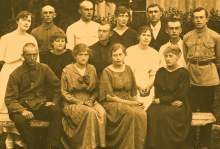
A FEW YEARS AGO, Ched Myers and I discovered this graffiti in my old suburban neighborhood in Saskatoon, Saskatchewan, scrawled across a fence just a block from where I grew up:
“... as long as the sun shines,
as long as the waters flow downhill,
and as long as the grass grows green ...”
It is a venerable phrase from the Two Row Wampum of 1613, an agreement between the Five Nations of the Iroquois and representatives of the Dutch government in what is now upstate New York, which affirmed principles of Indigenous self-determination, rights, and jurisdiction. The phrase has been reiterated in most subsequent treaties between European settlers and Indigenous Peoples in Canada.
Sixty miles due north of my old neighborhood is Opwashemoe Chakatinaw (named Stoney Knoll by settlers), nestled between the North and South Saskatchewan Rivers. A spiritual center for the Young Chippewayans, it was part of Reserve 107, assigned to this Cree tribe in 1876 under Treaty 6.
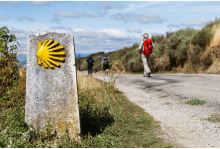
FOR AGES, THOSE living as monks, cloistered nuns, hermits, and wandering pilgrims have mastered the art of turning loneliness into solitude, creating a real presence to themselves, and to God. These spiritual explorers were often confined—as many of us are now—into narrow spaces, yet pilgrimage to the authentic self explores an interior landscape. The exterior pilgrimage often reflects the interior path of spiritual imagination conducted in confinement. Their lessons and practices are not cloistered today; they offer liberating tools that can resurrect and protect the space for real presence for all who desire detachment from the omnipresence of screens. Simply consider this: You can’t walk on unexpected pathways while looking at screens.
Untethered from normalcy
Pilgrims move in two directions at the same time—an outward direction toward a holy destination and an inward journey seeking an encounter with the sacred. Two of the best academic scholars of pilgrimages, Victor and Edith Turner, explain it in this one sentence: “Pilgrimage may be thought of as extroverted mysticism, just as mysticism is introverted pilgrimage.”
Pilgrimages, they suggest, were, and are, no walk in the park, or plain, or mountain. Embarking on such a journey, we become untethered not just from our physical normalcy. These uncertain, trusting steps also move us out of our spiritual familiarity. The pilgrim is invited not only to walk out of boxes of dogmatic beliefs but also to walk away from practices of comfortable spirituality.
This article is adapted from Without Oars: Casting Off Into a Life of Pilgrimage (Broadleaf Books, November 2020).
